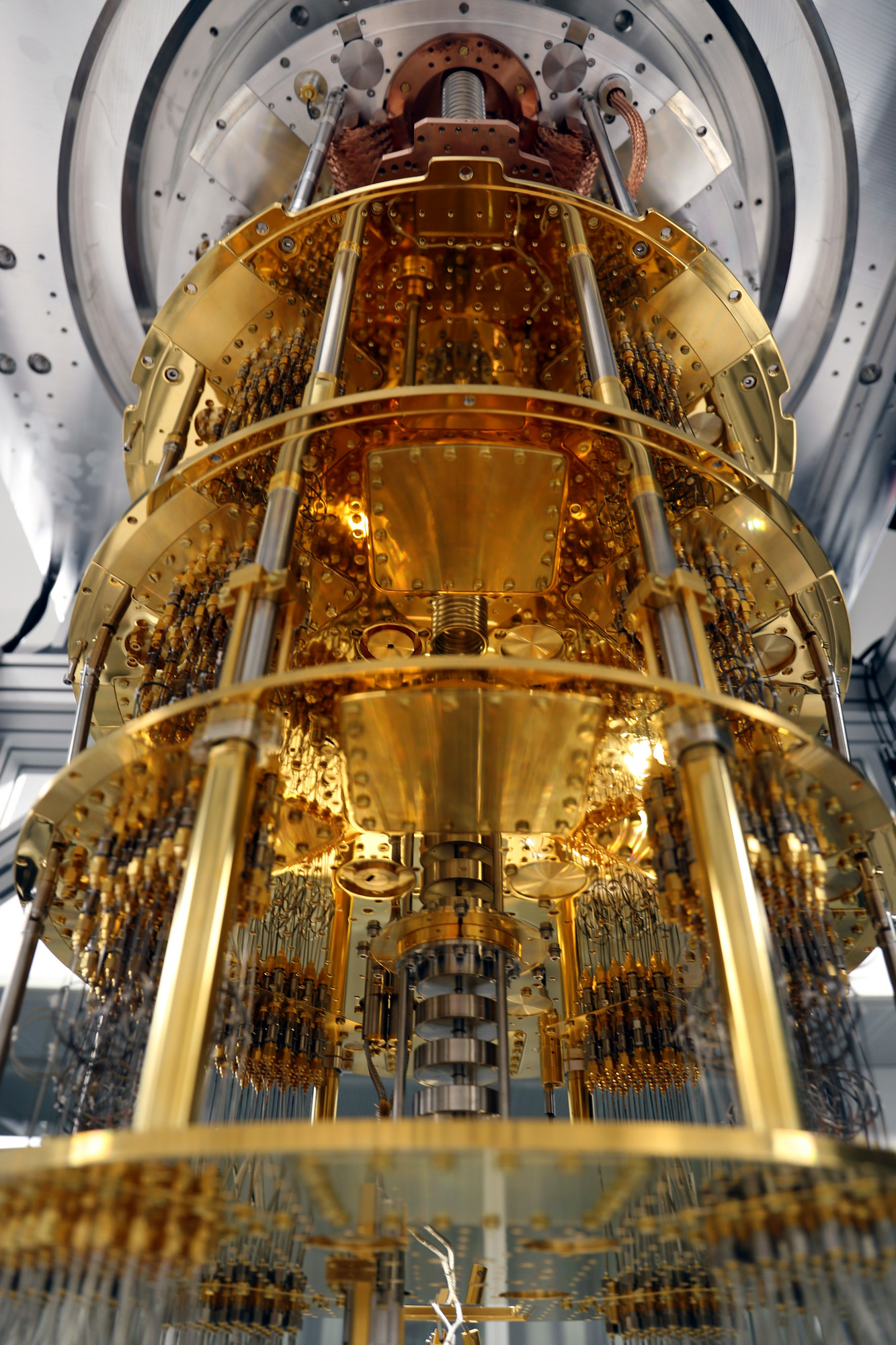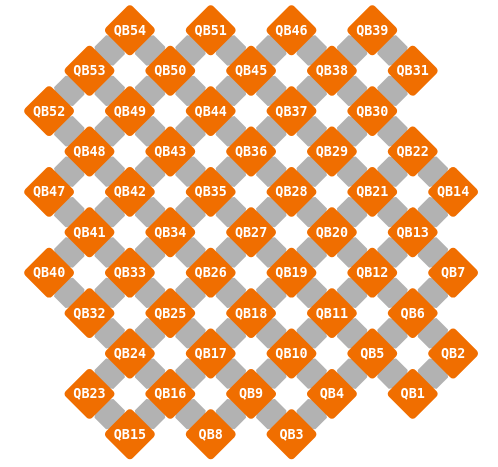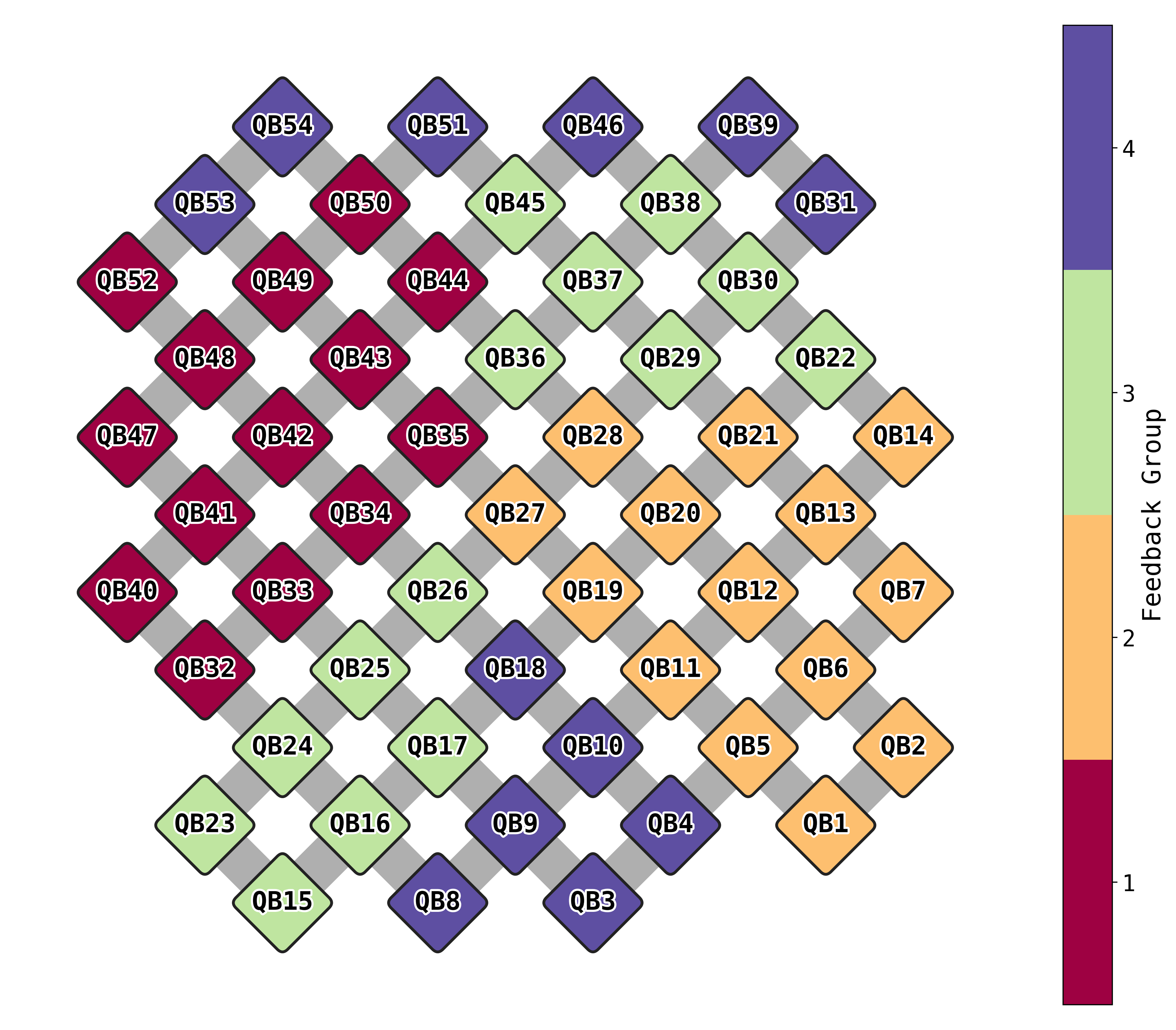VTT Q50
VTT Q50 is a 53-qubit superconducting quantum computer co-developed and built by IQM and VTT. It uses flux-tunable qubits and couplers which are described in this paper1.

Q50’s qubits are arranged in a lattice topology, meaning that the qubits inside the lattice have 4 neighboring qubits each.

Native-gate set
To run arbitrary quantum circuits, a QPU needs to implement a universal gate set. Q50 implements the following gates natively:
Single-qubit gate: Phased-RX gate (PRX)
R_\phi(\theta) = e^{-i (X \cos \phi + Y \sin \phi) \: \theta/2},
where the phase angle \phi and the rotation angle \theta are in radians.
To implement the gate, a microwave pulse is applied to the qubit, to rotate it on the Bloch sphere. The same gate can be implemented with different pulse shapes. For Q50, the default pulse shape is DRAG Cosine Rise Fall2 (drag_crf in the API).
Two-qubit gate: Controlled-Z gate (CZ)
\text{CZ} = \begin{pmatrix} 1 & 0 & 0 & 0 \\ 0 & 1 & 0 & 0 \\ 0 & 0 & 1 & 0 \\ 0 & 0 & 0 & -1 \end{pmatrix}
In the hardware, the gate is implemented by applying a flux-pulse to a coupler that mediates the coupling between the control and target qubit. Furthermore, a flux-pulse is applied to one of the qubits to detune it to the right frequency. The coupler flux-pulse is a Truncated Gaussian Smoothed Square (tgss in the API) wave and the qubit flux-pulse is a Cosine Rise Fall (crf in the API) pulse.
Measurement: Natively implemented as single-qubit measurements in the Z basis. The readout pulses are multiplexed, so that multiple qubits can be read out at the same time.
Feedback groups
Q50 supports classically controlled gates and mid-circuit measurements such as active reset. These can only be performed on certain groups of qubits on Q50. This is demonstrated below:

For example, applying a gate conditionally on QB49 based on the measurement of QB53 is not possible as they are in different feedback groups.
Programmatically this is equivalent to:
FEEDBACK_GROUPS = [
frozenset(["QB43", "QB47", "QB48", "QB35", "QB50", "QB49", "QB41", "QB32", "QB34", "QB42", "QB40", "QB52", "QB44", "QB33"]),
frozenset(["QB7", "QB11", "QB5", "QB2", "QB28", "QB14", "QB27", "QB13", "QB6", "QB21", "QB12", "QB1", "QB19", "QB20"]),
frozenset(["QB25", "QB30", "QB24", "QB36", "QB16", "QB17", "QB22", "QB38", "QB15", "QB23", "QB26", "QB45", "QB37", "QB29"]),
frozenset(["QB8", "QB4", "QB18", "QB10", "QB9", "QB46", "QB53", "QB31", "QB39", "QB51", "QB54", "QB3"]),
]Access
Device URL:
https://qx.vtt.fi/api/devices/q50Station URL:
https://qx.vtt.fi/api/pulse/q50Access: Circuit-level, pulse-level
Latest Client Libraries:
Client Library Package Name Compatible Version IQM Client iqm-client >= 33.0.0, < 34.0.0 IQM Pulla iqm-pulla ≥ 12.0.0, < 13.0.0